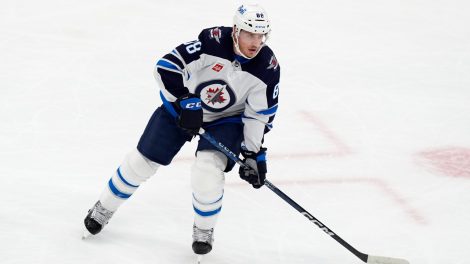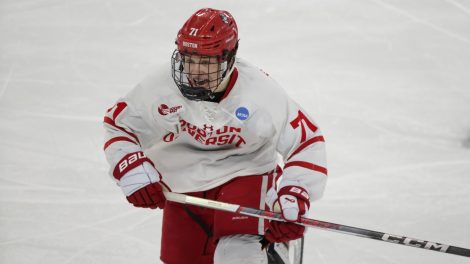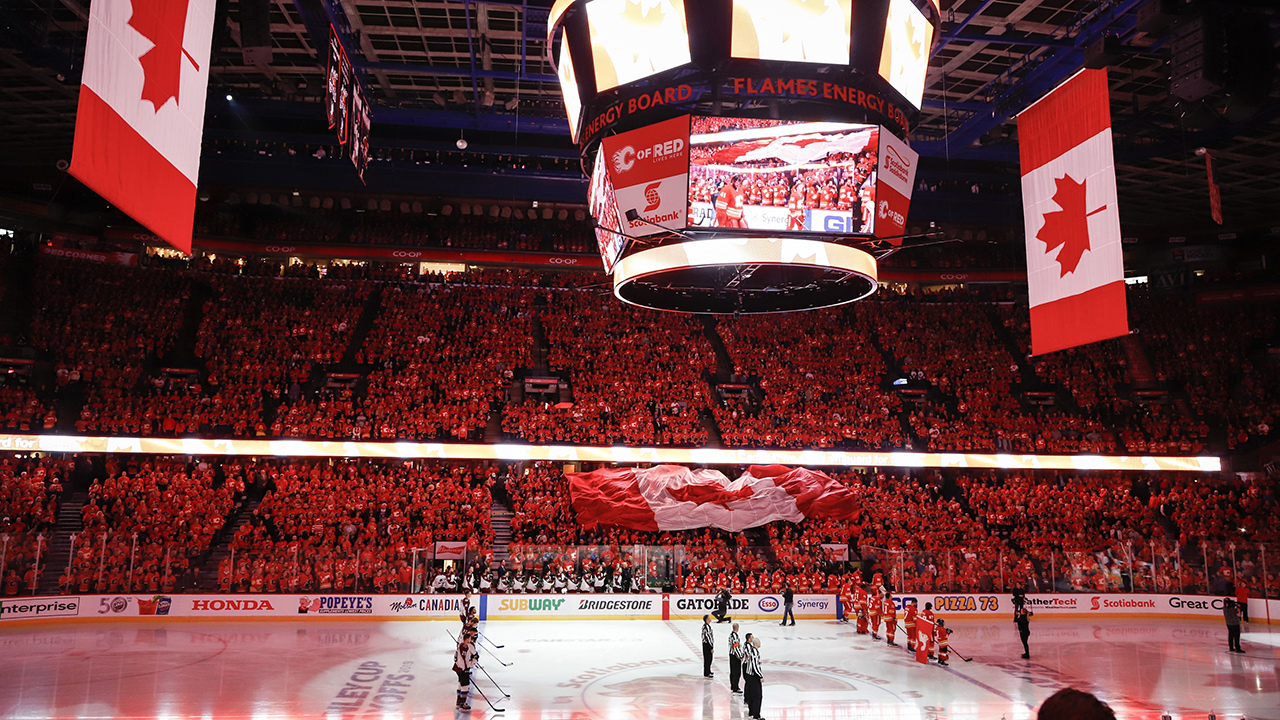The Vancouver Canucks’ uneasy straddling of short- and long-term interests was in evidence again on Wednesday night when the club completed a trade sending promising 19-year-old forward Jared McCann to the Florida Panthers in exchange for 24-year-old defenceman Erik Gudbranson.
It’s a curious deal. The Panthers weren’t actively shopping Gudbranson, but thought that perhaps McCann might be available. So they gave Vancouver a call. The Canucks weren’t actively shopping McCann, either, but were aggressively pursuing a second-pairing defenceman on the trade market. They were willing to listen – particularly when the Panthers didn’t balk outright when Vancouver asked about Gudbranson.
Assistant general managers from the two teams engaged in discussions this week and worked out, on a preliminary level, a mutual fit. The Canucks wanted an NHL-ready right-handed defenceman and while the Panthers valued Gudbranson as a person and a player, they’re staring down the barrel of long-term extensions for players like Reilly Smith, Jonathan Huberdeau and Aaron Ekblad as early as this summer. Gudbranson’s long-term fit in Florida was in question.
Once the primary pieces were agreed to, the trade rapidly came together.
“When this came up, we had to make a quick decision,” Canucks general manager Jim Benning told Sportsnet. “I think it’s going to help our group next year.”
The two sides agreed to sweeten the deal with draft picks. Vancouver dealt an early second- and fourth-round pick to Florida, who were eager to offset the bounty of mid-round picks they spent fruitlessly on deadline acquisitions Teddy Purcell and Jiri Hudler and received a fifth-round pick in return. And the deal was done.
The reaction to the trade has been polarized. Old school types are sure the Canucks fleeced Florida, while the analytics crowd is confident the Panthers hit a home run. We’ll see.
“Transitional defencemen” are in vogue at the moment and Gudbranson — who can hit and defend and skate and makes a decent first pass — isn’t likely to be confused for a puck mover. He has one of the lowest primary assist rates among regular NHL defencemen over the past three years and while Sportlogiq’s player-tracking data indicates that his outlet and stretch passing ability is above average, he’s not an active puck carrier.
McCann, meanwhile, is only 19 and though he chafed under limited usage during his rookie campaign in Vancouver, he’s on trajectory to be an impactful forward at the NHL level. On this, both sides of the trade agree.
“Trading Jared McCann was hard, because I believe in the player,” Benning said. “He made good strides through the year and I think he’s going to turn out to be a top-six forward and a productive player.”
There is a pressing need in Vancouver for good, young talent and goal-scoring ability. In that context, the club’s willingness to deal McCann justifiably causes eyebrows to furrow.
Benning, though, sees Gudbranson as a piece that better links the club’s dual objectives of winning now and building for later.
“You have to walk the fine line of being competitive and building for the future and I think with Erik we’ve checked both boxes,” Benning told Sportsnet.
“He’s 24-years-old, so he’s a young player,” Benning continued. “He’s ready now, he’s improved every year and I think last year he made a big step. You get a ready-made player who can step into your lineup that can help you compete now, but he fills that need for the 22-to-26-year-old player that we’re void of.”
Gudbranson, the third-overall pick at the 2010 NHL Draft, has improved as a defensive piece in recent seasons. He logged over 20 minutes a game for a Panthers team that permitted scoring chances against at the lowest rate in the NHL last season, according to war-on-ice.com. (Though it should be noted, the club fared relatively worse by this metric with Gudbranson on the ice.)
While goal scoring was a significant issue for Vancouver during a nightmare 2015-16 campaign, their defensive play was too often a tire fire also. Based on the rate at which the Canucks permitted scoring chances against, only the Colorado Avalanche were a more permissive defensive team. On this front, Gudbranson should help.
He’ll particularly help in this area if he’s paired with the right player. In past seasons, Gudbranson has been at his best when paired with a puck-moving partner like Brian Campbell or Dylan Olsen and the Canucks are hopeful that he can hold down a second-pair role alongside sophomore Ben Hutton.
“We think he’s going to be a good fit playing with Hutton,” Benning said. “Hutton can skate with the puck, move the puck up ice, so when you try to create a fit among your defence group you want one guy that can skate the puck up ice and one guy that’s more of a stay-at-home guy.”
Ultimately the Canucks felt that their needs on the blue line were glaring enough to warrant the expenditure of draft picks and a promising young forward. That the organization is convinced that they’ll be able to land a top-six caliber forward with the fifth overall pick in the upcoming draft helped cushion that blow.
It’s a steep price to pay, but the options to upgrade at right defence this off-season are limited.
“With the precedent that’s been set on the market for defencemen last summer, if you want to get a good young defenceman who can play now, that’s the price,” Benning explained.
Gudbranson signed a one-year, $3.5 million extension with the Panthers earlier this off-season and will be an arbitration-eligible restricted free agent when the deal expires. The two sides aren’t free to agree to an extension until the New Year and the Canucks will take their time before engaging him and his Newport Sports representatives in contract talks.
“We’re going to see how he does here,” Benning said of opening up talks with his team’s newest rearguard. “That’ll be down the road.”
Adding Gudbranson to the equation provides the Canucks with an immediate upgrade to their blue line. In a prescribed role and with the right partner, he could be an effective defensive contributor.
However, moving forward, the Canucks’ most pressing need is dynamic, young talent — and lots of it. In a traditional sort of ‘tear-it-down rebuilding effort,’ McCann fits that bill better than Gudbranson, but tearing down has never been the Canucks’ plan. And it isn’t now, clearly, despite this season’s 28th place finish.
The Gudbranson trade unmistakably signals that the organization remains intent on raging against the dying of the light.









